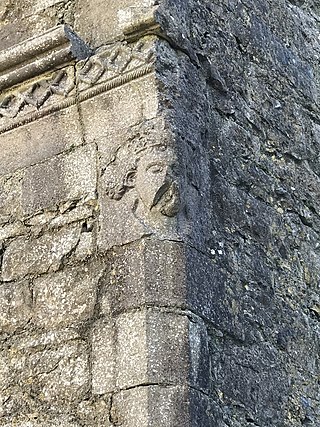
Ruaidrí mac Tairrdelbach Ua Conchobair was King of Connacht from 1156 to 1186, and High King of Ireland from 1166 to 1198. He was the last High King of Ireland before the Anglo-Norman invasion.

William de Burgh was the founder of the House of Burgh in Ireland and elder brother of Hubert de Burgh, 1st Earl of Kent and Geoffrey de Burgh, Bishop of Ely. William is often given the epithet, "the conqueror", but is not to be confused with the English king of the same nickname.

Cathal Crobhdearg Ua Conchobair (1153–1224), was a king of Connacht. He was the youngest son of the High King of Ireland Tairrdelbach Ua Conchobair and brother to the last fully recognized High King Ruadri Ua Conchobair. His own sons Aedh Ua Conchobair and Feidhlimidh Ua Conchobair were kings of Connacht after him.
Toirdhealbhach Mór Ua Conchobhair anglicised Turlough Mór O'Conor, was King of Connacht (1106–1156) and High King of Ireland.
Toirdhealbhach ua Briain, anglicised Turlough O'Brien, was King of Munster and effectively High King of Ireland. A grandson of Brian Bóruma, Toirdelbach was the son of Tadc mac Briain who was killed in 1023 by his half-brother Donnchad mac Briain.
Toirdhealbhach is a masculine Irish given name. Forms of the name include Tarlach and Traolach. It is often anglicised Turlough. The name ultimately derives from Irish: toirdhealbh "prompting", and originated as a byname meaning "instigator".
Events from the year 1168 in Ireland.
Diarmait Ua Briain was an 11th-century Irish king who ruled Munster from 1114 to 1118.
Ruaidrí Ua Conchobair, called Ruaidrí na Saide Buide was King of Connacht, perhaps twice.
Domnall Mór Ua Briain, or Domnall Mór mac Toirrdelbaig Uí Briain, was King of Thomond in Ireland from 1168 to 1194 and a claimant to the title King of Munster. He was also styled King of Limerick, a title belonging to the O'Brien dynasty since Brian Boru's sacking of the Hiberno-Norse city state after the Battle of Sulcoit in the 10th century.
Mór Ní Thuathail was a Queen-consort of Leinster as the principal first wife of King Diarmait Mac Murchada. Under Brehon Law, Irish men were allowed more than one wife. King Dermot's second wife was Sadhbh Ní Fhaolain.
Domnall mac Ruaidrí Ua Conchobair (1102–1106) was King of Connacht.
Muireadhach Ua Dubhthaigh was an Archbishop of Connacht, in Ireland.
Cormac Mac Cárthaigh was a Gaelic Irish ruler who was King of Munster. A member of the Mac Cárthaigh clan of the Eóganacht Chaisil, he was the final king of the unified Kingdom of Munster before the realm was divided into the Kingdom of Desmond and Kingdom of Thomond in the aftermath of the Treaty of Glanmire.
Murtogh Moynagh O'Conor, prince of Connacht, Ireland, flourished 1156-1210.
Donnell Mor Mideach Ua Conchobair, Prince of Connacht, fl. 1144 to 1176.
Mór Ní Briain was Queen of Connacht, and died 1218. She was a daughter of King Domnall Mór Ua Briain of Thomond. Domnall's wife was Órlaith Ní Murchadha, Princess of Leinster, daughter of Queen Mor Ui Thuathail and King Diarmaid Mac Murchadha of Leinster.
Muirchertach Tethbhach Ua Conchobair was Prince of Connacht.
Dubhchobhlaigh Bean Ua hEaghra, a.k.a. Dubhchobhlaigh Ní Conchobair, Queen of Luighne Connacht, died 1131.
Toirdhealbhach mac Diarmada Ua Briain was King of Munster in an interrupted reign from 1142 to 1165.


